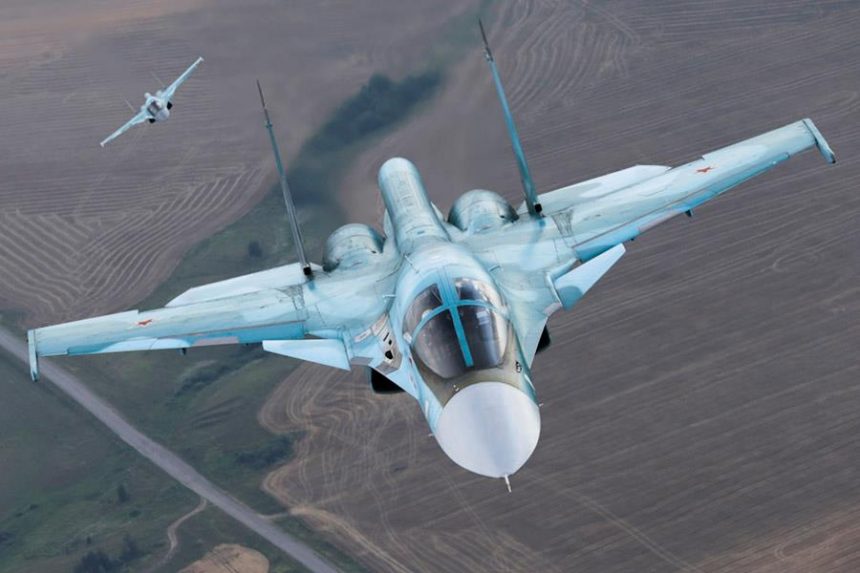U.S. Predator drones “intercepted” by Russia’s jets, U.S. fighters rerouted for deconfliction: the airspace over Syria is becoming increasingly dangerous.
As already explained in our article about the close encounter between a flight of U.S. F-16s and one of Russian Air Force Su-34s, which came within 20 miles each other over northwestern Syria, according to Lt. Gen. Charles Brown, commander of the American air campaign in Iraq and Syria, the Russians have come even closer than that to American drones flying in the same areas.
Indeed, if you look at the screenshot published here you’ll easily find the track of some unmanned aerial vehicles (in green color) operating along the border between Turkey and Syria: until a real coordination is put into place between U.S. and Russia, there is some risk of jets and UAVs from both parties interfering with one another.
So, it’s not really surprising what Fox News unveiled today: Russian jets deployed to Latakia, Syria, shadowed U.S. Predator drones on at least three separate occasions since the start of Russia’s air campaign last week.
According to defense officials who talked to Fox News, the RuAF jets have (quite obviously) not attempted to shoot down the drones but flew “intercept tracks” to get closer to and shadow the unmanned aircraft.
It would be nice to know whether the Russians briefly used their own radars (exposing valuable data about the way their antennas work to ESM platform operating in the same area) to spot the Predators or just got in visual contact with them and maneuvered to “intercept” the drones.
In 2013, the U.S. Air Force started escorting its Predators flying off Iran, after the drones were harassed by Iranian fighter jets trying to shoot them down: during a famous close encounter over the Persian Gulf an F-22 Raptor pilot taunted two Iranian F-4Es that were trying to intercept an American MQ-1.
Interestingly, Russian planes forced a U.S. combat plane to slightly modify its route for proper deconfliction: “it changed the flight path a little bit” U.S. Navy Captain Jeff Davis told reporters.
The situation could get even worse in the following days, considered that the Russian contingent is going to receive three more Su-30SM, as announced by the Russia’s MoD on social media.
Отдельный морской штурмовой авиационный полк #ЧФ пополнился тремя многофункциональными истребителями Су-30СМ pic.twitter.com/WofGdzTb8z
— Минобороны России (@mod_russia) 6 Ottobre 2015
Update: it looks like the above mentioned additional Su-30s are being deployed to Crimea.
In the last few days, the Turkish Air Force reported several violations of their airspace by a Russian Su-30SM and a Su-24; in at least two different incidents, TuAF F-16s were locked on by foreign fighter jets (a RuAF Flanker and a mysterious, “unidentified” Mig-29).
Image credit: Russian MoD
















